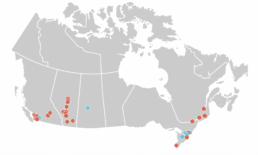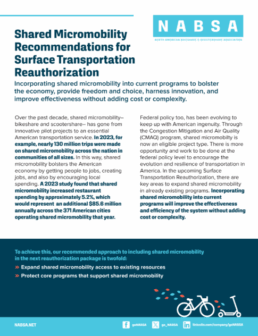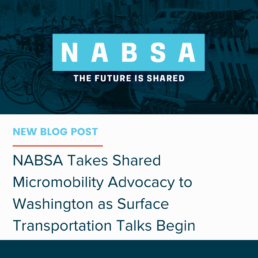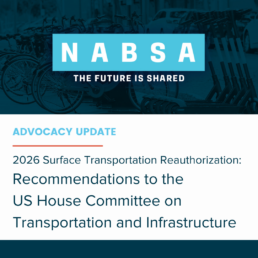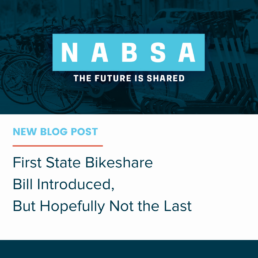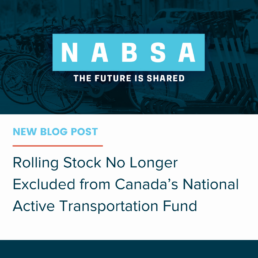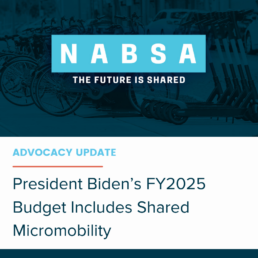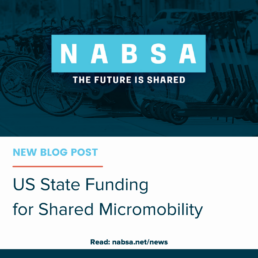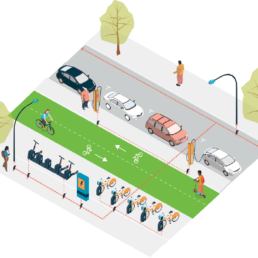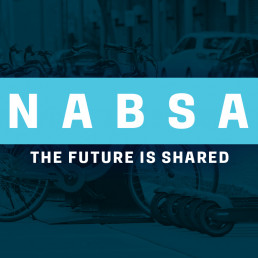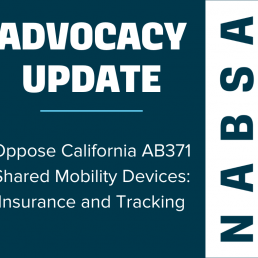Advocacy
NABSA advocates to grow shared micromobility and its benefits to communities. Our policy positions are based on NABSA’s core values: Safety, Diversity, Equity, Inclusion & Belonging, Integrity, Health, and Sustainability.
Why Shared Micromobility?
Shared micromobility is a tool that can be leveraged to build more equitable, environmentally sustainable, resilient transportation ecosystems. For over a decade, shared micromobility has proven to reduce carbon emissions from transportation, and increase equity and access to transportation. It’s helped cities reduce congestion, improve community health, address climate change, and support goals for vulnerable roadway user safety. It also creates jobs.
Now is the time to invest in shared micromobility and its benefits to communities. For shared micromobility to grow sustainably and provide its essential services to people, local partners like cities and transit agencies need increased funding, and an ability to use that funding toward shared micromobility programs.
- Shared micromobility helps people get to where they need to go, expanding mobility options and helping to create more equitable communities: Over 172 million trips were taken on shared micromobility in 2023, most on electric shared scooters and bikes.*
- Electric shared micromobility accounts for most of the deployed devices, and are hugely popular: E-scooters are 55% of the shared micromobility fleet. In 2023, 82% of shared micromobility systems included e-devices and 64% of shared micromobility trips were taken on e-devices.
- Shared micromobility increases mode choice, offering alternatives to single occupancy vehicle trips, and reduces carbon emissions from transportation: In 2023, 81 million lbs of carbon dioxide emissions were offset by shared micromobility trips that otherwise would have been made by car.*
- Shared micromobility connects people to transit and adds resiliency to transit networks, supporting multi-modal trips: For example, like in 2022 when the New York City subway was submerged under water by hurricane Ida, or when the Boston Orange line was shut down for needed repairs, bikeshare programs in those cities were leveraged and relied upon to get people where they needed to go.
- Safe and connected places to ride that bring people to meaningful destinations are essential infrastructure to support people in using modes like shared micromobility: There is still not nearly enough of this critical infrastructure. In the US, the National Highway Traffic Safety Administration (NHTSA) estimated that 42,915 people died in motor vehicle traffic crashes in 2021, a 10.5% increase from 2020. This represents a 5% increase in cyclist deaths and a 13% increase in pedestrian deaths. Such increases during a pandemic when there were fewer people driving demonstrates the urgent need for safe streets for all modes. It’s proven that people are more likely to choose non-car options for certain trips when they feel safe doing so. Additionally, research has concluded that installing bike lanes, especially protected bike lanes, leads to fewer fatalities and better road-safety outcomes for cyclists, pedestrians, and motorists.
* All statistics, unless otherwise noted, are taken from NABSA’s Shared Micromobility State of the Industry Report.

General Recommendations
![]() Make shared micromobility projects eligible in federal funding programs and fund shared micromobility projects at all levels of government
Make shared micromobility projects eligible in federal funding programs and fund shared micromobility projects at all levels of government
![]() Incorporate a multi-modal mindset so that when road design, road maintenance, and EV electrification projects are being done, micromobility infrastructure– charging locations, docking stations/hubs, and protected lanes– are also included.
Incorporate a multi-modal mindset so that when road design, road maintenance, and EV electrification projects are being done, micromobility infrastructure– charging locations, docking stations/hubs, and protected lanes– are also included.
NABSA’s Current Advocacy Efforts Primarily Focus on the Following:
Increased recognition for shared micromobility at the highest levels of government
Increased access to funding sources for shared micromobility and the infrastructure that supports it
Access to commuter benefits for shared micromobility users
Inclusion of electric shared micromobility charging within electric vehicle charging network development
Tools
Advocacy Toolkit
Access specific information for the US and Canada and find resources to help you advocate for shared micromobility.
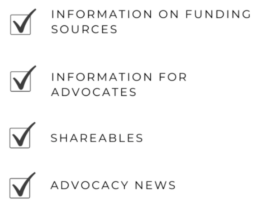
Incorporating Shared Micromobility in EV Charging Projects
Use this resource to learn about and advocate for the inclusion of shared micromobility in EV charging projects.
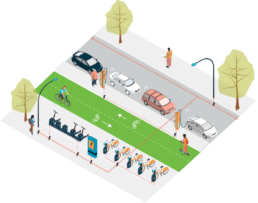
US Bill Tracker
*You will need to sign in with your NABSA Member Account to view the Bill Tracker.
US Funding Resources
This page serves as an introduction to United States federal transportation funding. It provides guidance for understanding the United States federal transportation landscape and potential funding opportunities to support shared micromobility.
Canada One Pager
Download our Canada one pager to help advocate for shared micromobility in your community.
